Related Research Articles
The history of Colombia includes its settlement by indigenous peoples and the establishment of agrarian societies, notably the Muisca Confederation, Quimbaya Civilization, and Tairona Chiefdoms. The Spanish arrived in 1499 and initiated a period of annexation and colonization, ultimately creating the Viceroyalty of New Granada, with its capital at Bogotá. Independence from Spain was won in 1819, but by 1830 the resulting "Gran Colombia" Federation was dissolved. What is now Colombia and Panama emerged as the Republic of New Granada. The new nation experimented with federalism as the Granadine Confederation (1858) and then the United States of Colombia (1863) before the Republic of Colombia was finally declared in 1886. A period of constant political violence ensued, and Panama seceded in 1903. Since the 1960s, the country has suffered from an asymmetric low-intensity armed conflict which escalated in the 1990s but decreased from 2005 onward. The legacy of Colombia's history has resulted in a rich cultural heritage, and Colombia's geographic and climatic variations have contributed to the development of strong regional identities.

César Augusto Gaviria Trujillo is a Colombian economist and politician who served as the President of Colombia from 1990 to 1994, Secretary General of the Organization of American States from 1994 to 2004 and National Director of the Colombian Liberal Party from 2005 to 2009. During his tenure as president, he summoned the Constituent Assembly of Colombia that enacted the Constitution of 1991.

The Colombian Liberal Party is a centre to centre-left political party in Colombia. It was founded as a classical liberal party but later developed a more social-democratic tradition, joining the Socialist International in 1999.
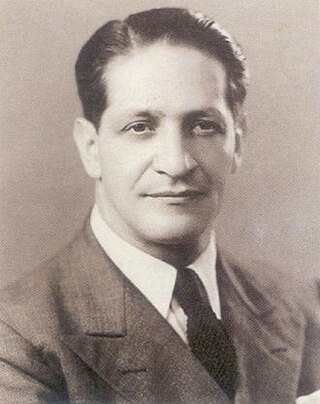
Jorge Eliécer Gaitán Ayala was a left-wing Colombian politician and leader of the Liberal Party. He served as the mayor of Bogotá from 1936–37, the national Education Minister from 1940–41, and the Labor Minister from 1943–44. He was assassinated during his second presidential campaign in 1948, setting off the Bogotazo and leading to a violent period of political unrest in Colombian history known as La Violencia. His ideas, known as Gaitanismo, are seen as a form of liberal socialism in Colombia.
Pedro Antonio Marín Marín, known by his "nom de guerre" Manuel Marulanda Vélez, was the founder and main leader of the Marxist–Leninist FARC-EP. Marulanda was born in a coffee-growing region of west-central Colombia in the Quindío Department, to a peasant family politically aligned with the Liberal Party during conflicts in the 1940s and 1950s.
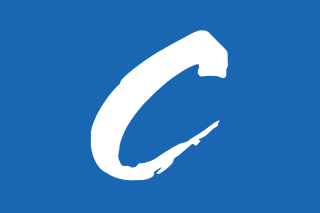
The Colombian Conservative Party is a conservative political party in Colombia. The party was formally established in 1849 by Mariano Ospina Rodríguez and José Eusebio Caro.

Guillermo León Sáenz Vargas, more commonly known by his nom de guerre Alfonso Cano, was the commander of the militant group known as Revolutionary Armed Forces of Colombia. He succeeded founder Manuel Marulanda in March 2008 and commanded the Marxist rebel group until being killed in action by the Colombian Army.
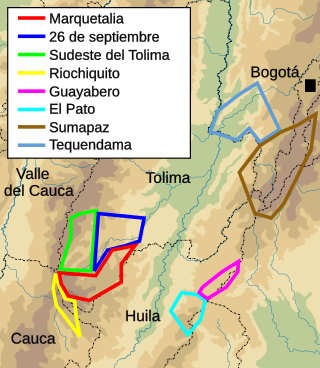
"Marquetalia Republic" was an unofficial term used to refer to one of the enclaves in rural Colombia which communist peasant guerrillas held during the aftermath of "La Violencia". Congressmen of the Colombian Conservative Party described these enclaves, including Marquetalia, as "independent republics" which needed to be brought under state control through military force. This area was eventually overrun by the National Army of Colombia in May 1964.
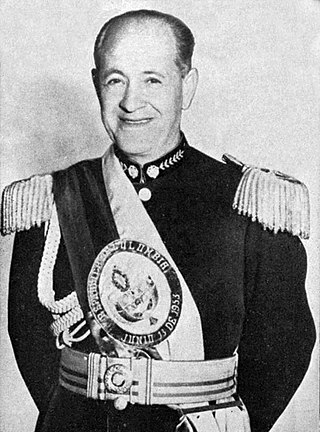
Gustavo Rojas Pinilla was a Colombian army general, civil engineer and politician who ruled as 19th President of Colombia in a military dictatorship from June 1953 to May 1957.

La Violencia was a ten-year civil war in Colombia from 1948 to 1958, between the Colombian Conservative Party and the Colombian Liberal Party, fought mainly in the countryside.
The Eastern Bloc of the Revolutionary Armed Forces of Colombia, from September 2010 known as Bloque Comandante Jorge Briceño, in honour of the slain guerrilla leader, was considered to be the strongest military faction of the guerrilla group. It was divided into groups of 50–400 combatants in each group, which patrolled and controlled different areas of Colombia's Eastern and Central-Eastern territory, as well as helped to carry out the killings, taxation, and arrests necessary to advance the organization's financial and political goals.
National Front was a period in the history of Colombia in which the two main political parties, the Liberal Party and the Conservative Party, agreed to rotate power, intercalating for a period of four presidential terms. The National Front Presidents were Alberto Lleras Camargo (Liberal), Guillermo León Valencia (Conservative), Carlos Lleras Restrepo (Liberal), and Misael Pastrana Borrero (Conservative).
Guerrilla movements in Colombia refers to the origins, development and actions of guerrilla movements in the Republic of Colombia. In the context of the ongoing Colombian conflict, the term 'guerrilla' is used to refer to left-wing movements, as opposed to right-wing paramilitaries.
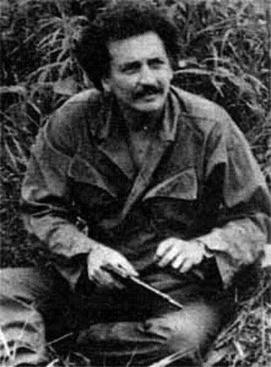
Jaime Alfonso Bateman Cayón, also known as "El flaco" or Comandante Pablo by his fellow guerrilleros, was a Colombian guerrilla leader and both founder and commander of the 19th of April guerrilla movement.
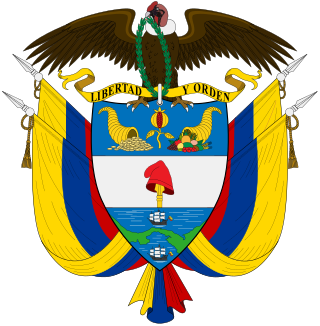
This is a timeline of events related to the Colombian armed conflict.
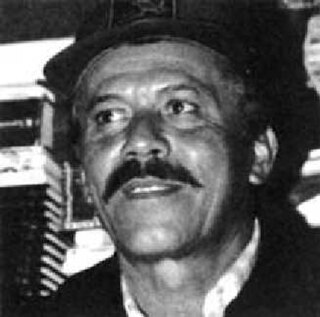
Noel Matta Matta-Guzmán, also known by his nom de guerre Efraín Guzmán, was a Colombian guerrilla leader, founding member of the Revolutionary Armed Forces of Colombia (FARC). He died of natural causes in 2002.

Politics of Valledupar refers to the political processes in the Colombian city of Valledupar in Cesar Department. The local politics of Valledupar take places within the framework of the Politics of Colombia which are based on a presidential system and representative democratic republic.
Hernando Durán Dussán was a Colombian lawyer and politician. He was the Mayor of Bogotá and a candidate for the Presidency in 1990.

General elections were held in Colombia on 19 April 1970 to elect the president, the Senate and the Chamber of Representatives. It was the first time all three institutions had been elected on the same day, and was also the last election under the National Front agreement, which had restricted electoral participation to the Conservative Party and the Liberal Party, with each party allocated 50% of the seats in both houses, whilst the presidency alternated between the two parties. As a result, the main contest in parliamentary elections was between factions within each party, whilst only Conservative candidates ran for the presidency. The result was a victory for Misael Pastrana Borrero, who received 40.7% of the vote. However, supporters of Gustavo Rojas Pinilla claimed that the election had been rigged in favour of Pastrana. Rojas had also been supported by the Christian Social Democratic Party. The 19th of April Movement guerrillas traced their origins to this alleged fraud.
General elections were held in Colombia on 21 April 1974 to elect the President, Senate and Chamber of Representatives. They were the first elections after the end of the National Front agreement, which had restricted electoral participation to the Conservative Party and the Liberal Party, with each party allocated 50% of the seats in both houses, whilst the presidency alternated between the two parties.
References
- ↑ Hernando Martínez C. (April 8, 1968). "La Muerte de Dumar Aljure Cierra un Capítulo en la Historia del Llano" (in Spanish). El Tiempo.
- 1 2 3 4 5 6 Richard L. Maullin (1968). The Fall of Dumar Aljure,A Colombian Guerrilla and Bandit (PDF). Rand Corporation.
- ↑ Gonzalo Sánchez G.; Donny Meertens (2001). Bandits, Peasants, and Politics: The Case of "La Violencia" in Colombia. University of Texas Press. p. 27. ISBN 9780292777576.
- ↑ Bert Ruiz (2001). The Colombian Civil War. McFarland. p. 118. ISBN 9780786450725.
- ↑ "Calma en los Llanos" (in Spanish). El Tiempo. April 6, 1968.